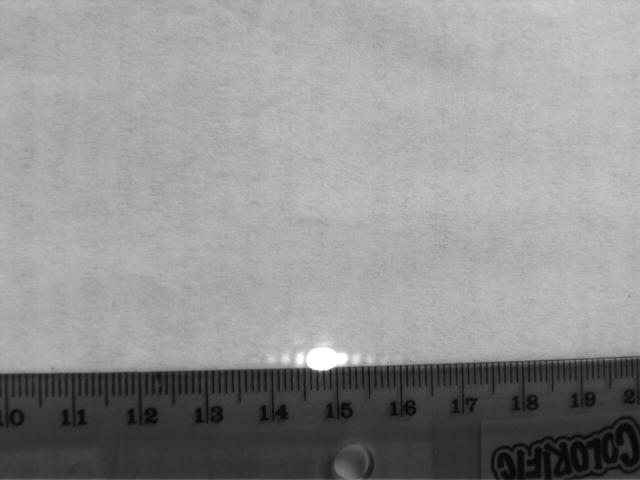Wiki Lab Writeup for Group 12b
Single Slit Diffraction
Barrett Nibling, Travis Nokes, Kurt Strovink
November 19th, 2007
Contents |
Abstract
This experiment uses a video camera to record diffraction pattern intensity for a He-Ne laser through a single slit, which are then compared to theoretical single slit diffraction values. The error present in the measurements is less than 10%.
List of Figures
- Schematic of Diffraction Apparatus
- Intensity of Diffraction Pattern
Introduction
This experiment examines the far field diffraction pattern for a He-Ne laser through a single slit. Intensity on the screen is measured with a digital camera and associated software. The inclusion of a scale on the screen makes error in position measurements trivially small. To reduce error in intensity, two pictures are analyzed; one with the iris of the camera nearly shut to get an accurate reading at the main peak and a second with the iris open to allow more accurate examination of the fringes.
Theory
Single slit diffraction refers to the tendency for light to spread out after passing through a slit. The phenomenon can be understood through Huygens principle, which states that a wave front can be treated as a line of point sources. When such a wave front hits a slit, the smaller set of point sources produces an interference pattern. To predict the minima, it is fairly simple to show that if a point at one edge interferes destructively with a point in the center, an adjacent set of points will also interfere destructively, and the argument follows for the entire slit. The minima should therefore match the pattern produced by two narrow slits spaced at half the width of the slit. A more rigorous treatment predicts the following intensity pattern [1]:

|
![= I_0 {\left[ \frac{\operatorname{sin} \left( \frac{\pi a}{\lambda} \sin \theta \right)^2}{\left( \frac{\pi a}{\lambda} \sin \theta \right)^2} \right] }](/csm/wiki/images/math/6/7/f/67f383e216ee21e856713490e7a5f8cf.png)
|
where a is the slit width, λ is the wavelength, and θ is the angle from the normal to the slit.
Procedure
As shown below, a single slit is placed in front of the helium-neon laser. The slit is positioned level with the light source and perpendicular to the axis of the beam. A viewing screen with a ruler mounted level with the emitted beam is placed directly in the path of this diffracted beam. A video camera is mounted, facing the viewing screen. The camera transmits the relative intensity of the diffraction pattern to the computer program.
Before data can be recorded, the ruler is photographed alongside the diffraction pattern to calibrate the horizontal scale.
The viewing area is restricted to a single line through the center of the diffraction pattern and the lens iris is adjusted to prevent saturation. The viewing area is then expanded to encompass the entire diffraction pattern and reduce speckle pattern noise. These relative intensity measurements are observed and recorded.
Results
The following tables and graphs show the results acquired from the diffraction pattern recorded by the video camera, alongside the results obtained from the working equation.
The following graph shows the results obtained with the iris nearly closed, yielding a clear representation of the intensity maxima in the center.
Error Analysis
For the error analysis, since θ is the only changing variable and all the others are free parameters or constants with negligible error, the only error associated with the lab is in θ. However using the method of taking the derivate of the working equation with respect to the independent variables to determine the error in the experiment gives the following equation,

Due to the complexity of this equation, we opted for a simpler method of just comparing the graphs of the data acquired in the lab to the graph produced by the working equation. As shown in the graph above, the graph fits the model to within 10% of error. This error we determined to be mainly because of noise. Due to the fact the lights were on in the lab, the camera couldn't pick up the fringes as well as if the apparatus was in a black box. This would reduces nearly all interference but would make the seeing the ruler difficult.
Conclusion
The diffraction patterns for the He-Ne source is determined accurately; the error is under 10% and values obtained from the working equation fall within that error. The asymmetry of the intensity measurement can be attributed to interference rather than any deviation from the model. The consistency of the measured diffraction pattern with the theoretical model gives confidence in these results.
References
[1] Wikipedia - Diffraction (online at http://en.wikipedia.org/wiki/Diffraction)
[2] Jenkins, F A and White, H E , Fundamentals of Optics, 4E, McGraw-Hill, 1976.


